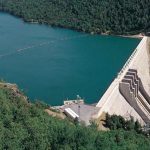Cool, clean water
Chile is the only country in Latin America that has privatized its entire urban water supply and sanitation sector.
Chile has one of the best coverage and quality levels in Latin America for water supply and sanitation, especially in the urban areas where 85% of the country’s population lives.
In 2010, 99.9% of the population of Chile’s urban areas had access to potable water and 95.9% had access to sanitation, according to SISS (Superintendencia de Servicios Sanitarios) the Chilean regulatory agency for urban areas. Nationally, 91.3% had water supply access and 82.5% had access to sanitation, according to the Casen Survey 2006.
That’s a huge improvement since the 1970s when Chile began extending and developing its water and sanitation infrastructure.
“The situation in the late 1970s was a bit tricky,” explains Gonzalo Cordua, General Manager of Nuevo Sur, the fourth largest water operator in Chile. “We rely on fruit and agriculture exports for a substantial part of our economy, yet some of these trees and vineyards were drinking water from rivers that did not necessarily pass through waste treatment plants. It would have been a matter of time before health concerns arose and alarms went off.”
As a result of the infrastructure development, water access increased from 78% in 1976 to 98% in 1988, and sanitation access increased from 52% in 1976 to 82% in 1988.
In the 1990s, most utilities were partially handed over to the private sector. Investment in Chile’s water and sanitation sector reached $5.7 billion during the 1993–2005 period, according to the World Bank’s Private Participation in Infrastructure database.
 As a result of public outcry over the sale of up to 65% of water utilities, in 2001 the government stopped selling utilities and started granting 30-year concession contracts instead via build-operatetransfer (BOT) agreements.
As a result of public outcry over the sale of up to 65% of water utilities, in 2001 the government stopped selling utilities and started granting 30-year concession contracts instead via build-operatetransfer (BOT) agreements.
The outcry against privatization continues as some Chileans object to price increases and private control of the resource. For example, in 2009 the Spanish electricity company Endesa bought up 80% of the water rights in a big region in the south. In the north, agricultural producers compete with mining companies for scarce water supplies.
“We have come a long way, and even though 94% of Chilean water production is in private hands, we have made great environmental progress,” says Magaly Espinosa, SSI Director. “Our next steps will be to expand our rural water program and confront challenges in finding new groundwater sources and new water desalination investments, mainly in the dry northern areas of the country.”
More than 80% of Chile’s fresh water is used for irrigation, followed by industry (8%), mining (7%) and drinking (4%). Many of the water development projects now underway are to supply water to the country’s mining sector.
 About $7.7 billion is planned in current projects to augment water supply for the mining industry. Copper production is expected to reach 7.3 million tons in 2020 which means a 45% increase in water use. That poses a problem since the mining industry is in one of the driest regions on the planet.
About $7.7 billion is planned in current projects to augment water supply for the mining industry. Copper production is expected to reach 7.3 million tons in 2020 which means a 45% increase in water use. That poses a problem since the mining industry is in one of the driest regions on the planet.
Some mining companies have water rights but in some cases the aquifers they draw from will be depleted within a few years. Unless alternative sources of water are developed, some of the planned mining expansion won’t happen, says Santiago González Larrain, Chile’s mining minister.
We must motivate the construction of desalination plants as an alternative,” González says.
The private sector agrees. Aguas Antofagasta, a Chilean water utility, is building a $120 million desalination plant in the northern city of Antofagasta. The plant will produce 1,000 liters a second of potable water and is expected to be completed by late 2013.
And a Spanish sustainable development company, Acciona, recently won a $65 million contract to build and operate a desalination plant near the Atacama desert which will produce 17 million liters (4.5 million gallons) of fresh water a day.
For more information:
SISS (Superintendencia de Servicios Sanitarios)
No water, no mining
Chile’s mining industry is located in the arid north of the country. But the scarcity of water in the region is a serious problem, not just to the mining industry but to the economy as a whole since mining accounts for about a fifth of Chile’s GDP.
Finding new sources of water for industries like mining is an issue because the overexploitation of limited groundwater resources in the north puts into question the sustainability of existing and planned mines.
Many people are convinced that alternative sources of water, particularly desalination plants, are the solution.
Chile’s Minister for Mining, Santiago González Larrain, says that without additional sources of water, some planned mining developments will not be brought online.
“We must motivate the construction of desalination plants as an alternative,” says González.
This concern is driving a new wave of desalination projects in Chile’s north, such as in the Atacama region where copper mining, which consumes the vast majority of the water used by the mining industry, consumes 105,000 m3 of water a day, which is in excess of the industry’s allocated water rights.
In a recent report, the Chilean copper commission, Cochilco, states that after peaking in 2017, copper production will reach 7.3 million tons in 2020. To meet this demand, the industry’s water usage will need to increase by 45%. In the Atacama region alone water consumption will more than double by 2020.



